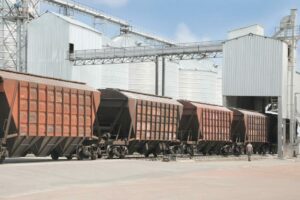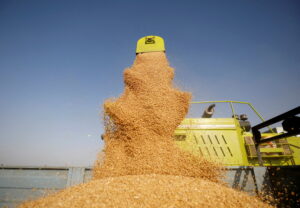Logistics will become a decisive factor influencing the domestic price of grain
In addition to world prices, the high cost of farmers’ access to markets will have a decisive influence on the formation of domestic grain prices in Ukraine in 2024/25. Now it is determined by the current pricing principles for railway logistics services. Because the price of grain transportation is formed not by producers and exporters, from whom the demand for transportation of grain cargoes originates, but by intermediaries and owners of private wagon fleets.
The situation is radically different from last year. After all, in the spring of 2023, market factors influencing the cost of rail transportation still existed. At that time, the trends of reducing the real demand of cargo owners for transportation, against the background of the surplus of grain wagons, formed the prerequisites for reducing the cost of railway logistics for farmers to the level of 2020/21 MY.
Thus, on the eve of the 2023/24 marketing season, the market factors (the ratio of supply and demand) were such that the price of using a grain wagon in the calculation of the cost of transportation will be within UAH 500 per day. Today, prerequisites are being formed under which the price of daily use of grain trucks in 2024/25 may be several times higher than last year’s forecasts. Not 500 UAH, but 1800 UAH per day.
Although the volume of transportation will be smaller: there are already forecasts of a 30% reduction in the gross harvest due to farmers’ rejection of intensive technologies and the main export crops, the demand for transport will also be correspondingly smaller, because we have a surplus of grain wagons.
In a healthy market relationship, a decrease in demand against the background of a large supply should lead to a decrease in price. However, this is not happening, because since October 2023, Ukrzaliznytsia has created the prerequisites for an increase in the price of using a grain car from UAH 336 to UAH 4,000 per day.
In November 2023, the Ministry of Agrarian Policy analyzed the methods of conducting auctions by Ukrzaliznytsia for the use of grain trucks and found the reasons for this skyrocketing price increase.
The first is the non-systematic nature of auctions, when the farmer-producer does not have a clear understanding of how many wagon shipments he can purchase for the required period, and whether he will purchase them at all.
The second is the deliberate auctioning of a limited number of railcar shipments (500 railcar shipments, although the physical capacity of UZ was at least 5,500 railcar shipments).
The third is the very mechanism of Ukrzaliznytsia auctions, which allows and even encourages the participation of resellers, and at the same time makes it difficult for direct producers-farmers to participate.
In addition, owners of private car fleets are often involved in heating up prices at auctions, who deliberately tie the rent of their cars to the price bar of UZ auctions, and then come to the auction themselves and determine the “fair market price” for the entire market.
Today, when the volume of transportation is seasonally decreasing, UZ has taken another step to prevent a drop in the price bar. First, it refuses those willing to purchase transportation at Dutch auctions, which it conducted earlier and which it calmly conducts now for semi-wagons. Secondly, UZ came out with an offer of long-term contracts for transportation at a fixed price.
But the price formation mechanism under the terms of these contracts is primarily beneficial to freight forwarders, not to agrarian producers. The price depends on the volume of the declared cargo, so a medium and small agricultural producer will have to pay more than a wholesaler. In fact, “Ukrzaliznytsia” is once again becoming a lifeline for forwarders and private owners of wagons, because it is the UZ prices that will become a marker for the entire market.
That is, the “fair market price” of grain transportation is formed not by producers and exporters, from whom the demand for the transportation of grain cargoes originates, but by intermediaries and owners of wagon fleets, who have neither exports nor grain.
The cost of transportation “adjusted” in this way will largely determine the domestic price of grain. In turn, it affects the motivation of farmers for the next sowing campaigns and the country’s GDP.
This factor will also affect sowing. A number of companies are already abandoning the sowing of spring grain crops and focusing on technical crops and those capable of withstanding expensive logistics. And the producers of the regions farthest from the ports (in particular, the Chernihiv region) will sow mainly those crops that they can process on the spot.
It is possible to change this trend in one step: it is enough to return to the format and frequency of auctions for the use of grain wagons, which were already held, for example, in the fall of 2022, and to offer agricultural producers long-term obligations for transportation from specific locations of their cargo, also through an auction . And right now, when the farmer is determined with the future sales strategy.
This will be a fair market. By the way, Ukrzaliznytsia practiced this before. It is entirely within the authority of the state carrier to return the format of mutual relations that will not create a financial burden for farmers in accessing markets.





